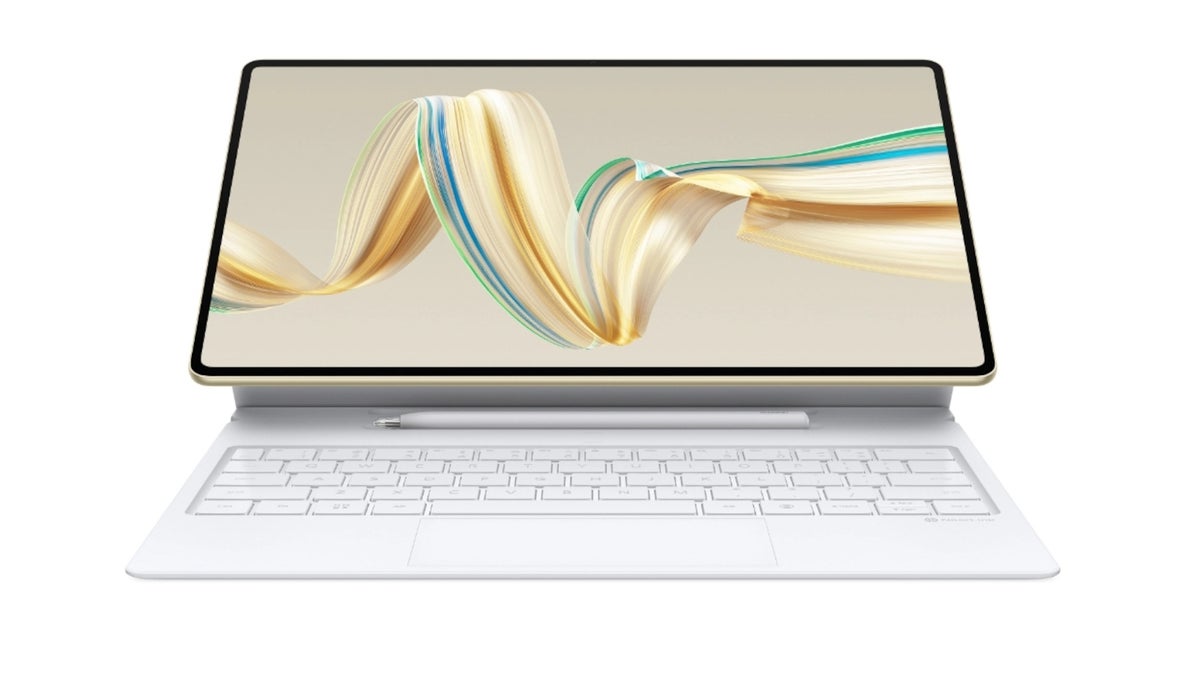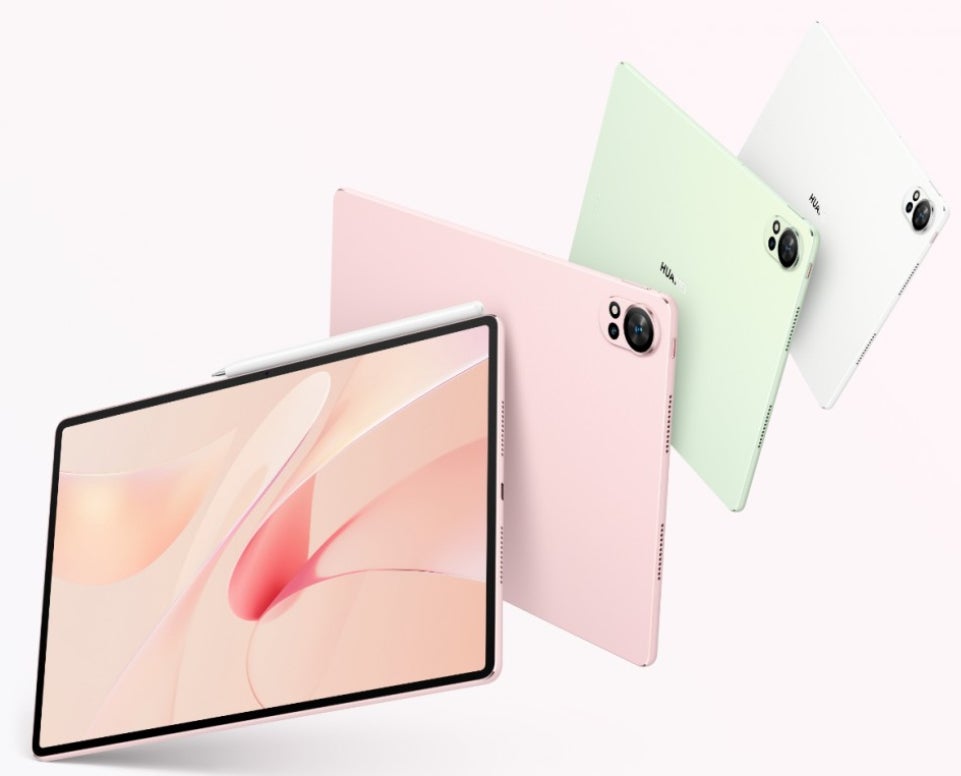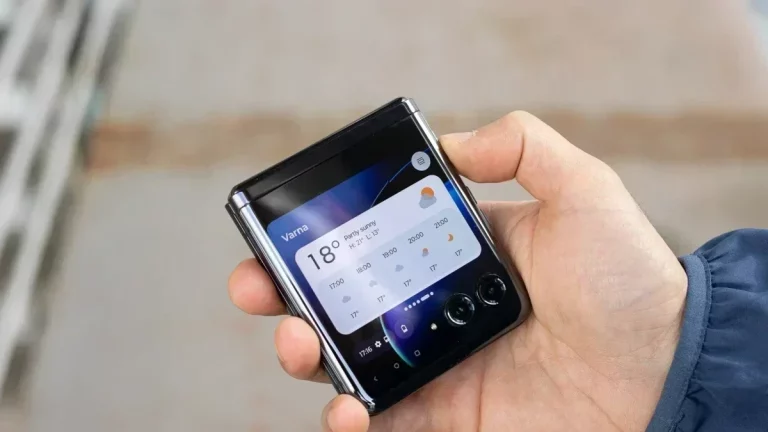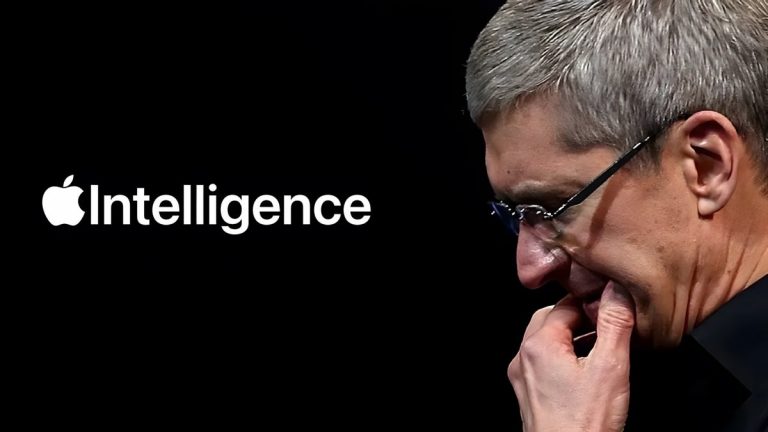Huawei’s latest flagship tablets are full to the brim with new tech

Huawei MatePad Pro 12.2 (2024) | Image credits: Huawei
After introducing one of the thinnest flip phones on the market, the Nova Flip, earlier this week, Huawei is back with more top-of-the-line products, the MatePad Pro 12.2 (2024) and MatePad Air (2024).
Both flagship tablets look amazing on paper (in pictures too), but they’re missing one major piece: Android. Huawei is no longer allowed to use Google’s operating system, which is why the Chinese company has come up with its own ecosystem called HarmonyOS.
Although HarmonyOS initially allowed users to run Android apps on their devices, the upcoming HarmonyOS NEXT promises to ditch Android support and go all in on native apps.
The MatePad Pro 12.2 (2024) and MatePad Air (2024) run on HarmonyOS 4.2, which still allows users to install Google Play GMS. However, this requires some technical knowledge and/or a little bit of attention following various guides on YouTube/Weibo.
Dual-layer OLED panel and Bluetooth on steroids
Aside from that, Huawei’s flagship tablets are really powerful and take advantage of some interesting pieces of technologies like NearLink and Tandem OLED display.
According to Huawei, the MatePad Pro 12.2 has a dual-layer Tandem OLED panel that lasts three times longer than traditional OLED displays. On top of that, thanks to the technology inside, it’s 33 percent more power efficient.
A Tandem OLED is brighter than a traditional OLED because it uses the light from both displays. Although Apple launched the first tablets to pack a Tandem OLED display (2024 iPad Pro 11 & Pro 13) this isn’t really something new.
LG is the company that came up with the Tandem OLED technology back in 2019, but it wasn’t adopted by the smartphones/tablets industry until this year. The Tandem OLED technology was initially used in automobiles because drivers need brighter, more durable displays in their cars.
As the name suggests, the MatePad Pro sports a large 12.2-inch Tandem OLED display that features 1840 x 2800 pixels resolution, 144Hz refresh rate, and up to 2,000 nits peak brightness.
In comparison, the Apple iPad Pro 13 (2024) has a 13-inch Ultra Retina Tandem OLED display that supports 2064 x 2752 pixels resolution, 120Hz refresh rate and up to 1,600 nits peak brightness.
As far as the MatePad Air (2024), Huawei’s new tablet sports a slightly smaller 12-inch IPS LCD display with 1840 x 2800 pixels resolution, 144Hz refresh rate, and up to 1,000 nits peak brightness.

Huawei MatePad Air (2024) | Image credits: Huawei
Unfortunately, Huawei was quite vague about the chipsets powering its new tablets. Although previous reports claim that the MatePad Pro 12.2 (2024) is equipped with Huawei’s Kirin 9010 chipset (the same powering the Pura 70 series), we can’t confirm the information. On the bright side, we know Huawei plans to launch multiple versions of MatePad Pro 12.2 (2024) and MatePad Air (2024) based on the amount of memory inside. For example, the MatePad 12.2 (2024) will be available in three different versions: 12/256GB, 12/512GB, and 16GB/1TB.
The MatePad Air (2024) features up to 12GB RAM and 512GB internal storage (8/256GB, 12/256GB, 12/512GB). It’s worth noting that neither features microSD card slot, so what you see is what you get when it comes to storage.
Interestingly enough, Huawei included dual-camera setups on both tablets: 13MP main and 8MP ultra-wide. The biggest difference is that the MatePad Pro 12.2 (2024) comes with a 16-megapixel front-facing camera, whereas the MatePad Air (2024) has a smaller 8-megapixel selfie snapper.
Although both Huawei tablets are powered by 10,100 mAh batteries, the MatePad Pro 12.2 (2024) supports 100W wired fast charging, while the MatePad Air (2024) only 66W.
Previous rumors pointed out that the tablets will feature Huawei’s unique NearLink technology, but we only got confirmation for the MatePad Pro 12.2 (2024).
NearLink is a short-range wireless communication protocol with ultra-low latency, which uses a set of standards to integrate the advantages of traditional wireless technologies like Bluetooth and WiFi.
It offers around 60 percent lower power consumption, 6 times higher speed, 1/30 delay, and 10 times higher number of network connections in comparison with traditional wireless connections, at least according to Huawei.
Huawei also confirmed that the MatePad Pro 12.2 (2024) comes with Beidou satellite SMS functionality, as well as side-mounted fingerprint sensor. Both tablets support 3rd-geneartion M-Pencil stylus and Huawei’s new Star Glide keyboard that’s made from aviation-grade materials.
Prices and availability
As far as the price goes, these feel quite decent compared to other tablets in the same tier. Still, let’s not forget that these prices are only available in China.
MatePad Pro 12.2 (2024) prices:
- MatePad Pro 12.2 (12GB + 256GB) – 4299 yuan ($600 / €550)
- MatePad Pro 12.2 (12GB + 512GB) – 4799 yuan ($670 / €610)
- MatePad Pro 12.2 (Gold Edition 16GB + 1TB) – 8299 yuan ($1155 / €1060)
MatePad Air (2024) prices:
- MatePad Air 2024 (8GB + 256GB) – 2999 yuan ($415 / €380)
- MatePad Air 2024 (12GB + 256GB) – 3299 yuan ($460 / €420)
- MatePad Air 2024 (Papermatte 12GB + 256GB) – 3599 yuan ($500 / €460)
- MatePad Air 2024 (Papermatte 12GB + 512GB) – 3999 yuan ($555 / €510)
It’s also worth mentioning that the MatePad Pro 12.2 (2024) is available in Black, Gold and White, while the MatePad Air (2024) comes in Cherry Blossom Pink, Feather Sand White, Green, and Smoky Gray. Both tablets will go on sale in China on August 13.
Source: www.phonearena.com





